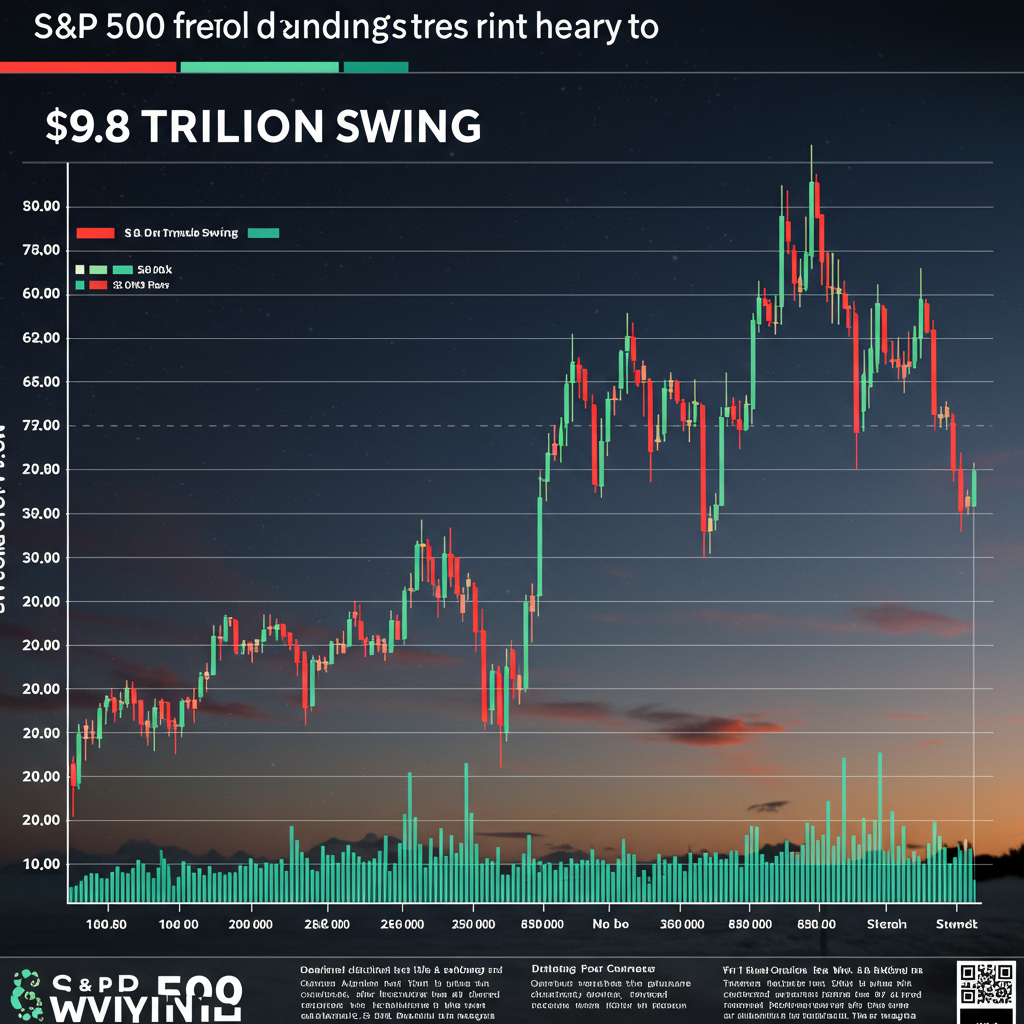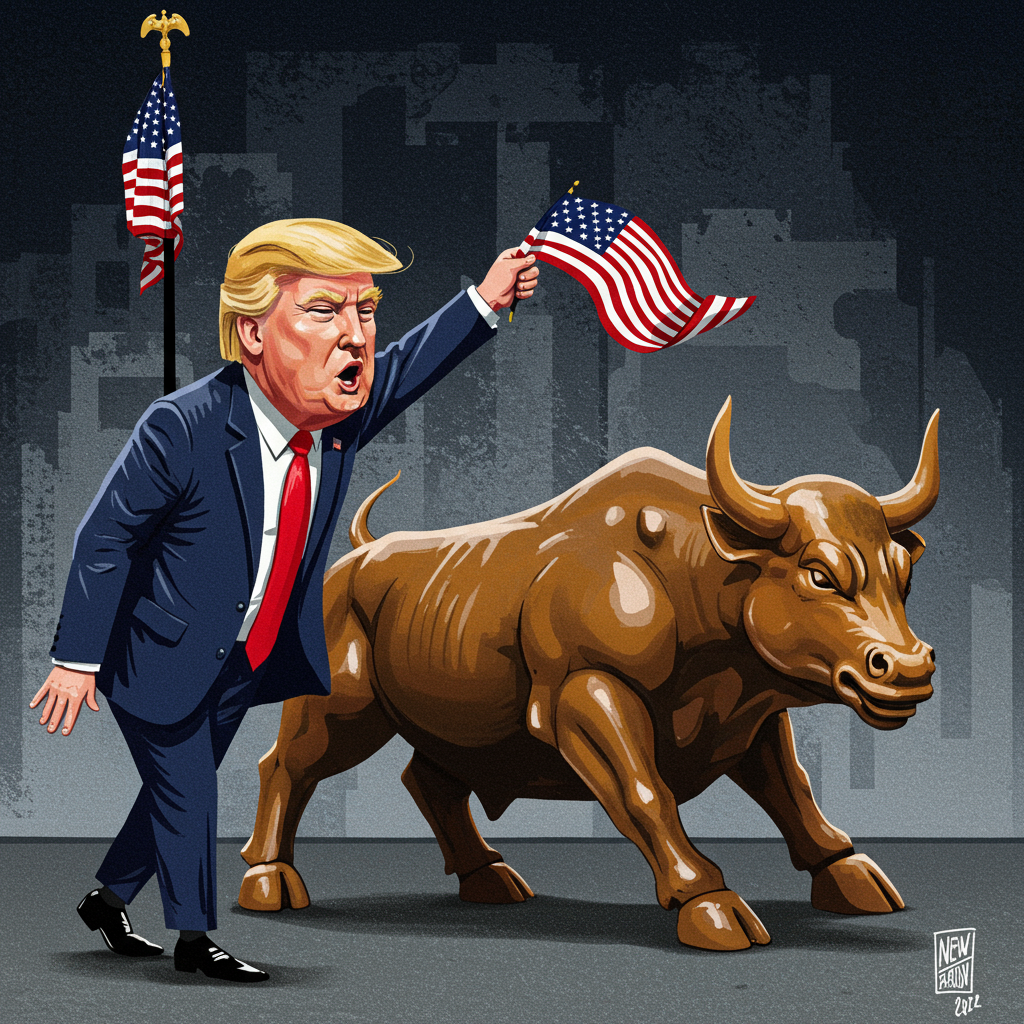The benchmark S&P 500 index recently stood on the cusp of reclaiming its all-time closing record, marking the near-completion of a breathtaking “roundtrip” journey. This volatile period saw the index shed and subsequently regain an estimated $9.8 trillion in market value over a span of just four months.
The $9.8 Trillion Market Swing
The S&P 500 reached its previous peak on February 19. What followed was a sharp decline, largely influenced by uncertainty surrounding President Donald Trump’s shifting trade policy and the imposition of tariffs. By early April, the index had fallen by as much as 18.9%, erasing approximately $9.8 trillion in market capitalization from its February high, according to FactSet data. This steep drop brought the market perilously close to bear market territory.
However, since hitting its low point on April 8, the S&P 500 has staged a remarkable comeback, soaring more than 23%. This powerful rally has propelled the index back towards its previous record levels, poised to recover the significant value lost earlier in the year.
Factors Driving the Rally
Several elements contributed to the recent surge in stock prices:
Economic Data: A flurry of economic reports, including a downward revision to the first quarter’s economic contraction, helped bolster market sentiment. Experts noted that markets had already “priced in” much of the earlier economic turmoil.
Trade Policy Hopes: Hopes for progress on trade negotiations under the Trump administration, alongside key deadlines like the July 9 trade deal target, fueled investor optimism.
- Geopolitical Calm: A perceived de-escalation of tensions in the Middle East also contributed to increased investor confidence.
- <a href="https://www.ign.com/wikis/deltarune/HowtoGettotheSRank_Room”>www.ign.com
- www.tomsguide.com
- maritime-executive.com
- timesofindia.indiatimes.com
- www.sammobile.com
As Paul Stanley, chief investment officer at Granite Bay Wealth Management, observed, the market appears to be betting on continued positive developments on trade and a calming geopolitical landscape.
Nearing the Peak: A Record Attempt
During recent trading sessions, the S&P 500 briefly surpassed its previous February record high on an intraday basis but ultimately fell just shy of closing at that level. The index needed a gain of 0.86% or more to officially notch a new closing record.
The tech-heavy Nasdaq Composite followed a similar path. After dropping into a bear market in early April, it surged over 32% and also briefly topped its December record high during trading, though it too failed to close at a new peak. In contrast, the Dow Jones Industrial Average lagged behind, remaining about 3.75% below its December record, partly due to the performance of specific heavyweight stocks like UnitedHealth Group (UNH).
Expert Outlook: What’s Next for Stocks?
Wall Street analysts hold mixed views on whether the market rally can continue or if reaching record highs signals potential downside ahead.
Some experts, like José Torres, senior economist at Interactive Brokers, believe “Meaningful progress on any of the two matters” (referring to trade or the president’s budget bill) could propel equities to fresh records.
Others, however, feel the focus needs to shift. Carol Schleif, chief market strategist at BMO Private Wealth, suggested that it would benefit stocks if the market narrative moved away from tariffs, trade policy, and geopolitics towards company fundamentals.
Despite the strong rally, market sentiment, as measured by metrics like CNN’s Fear & Greed index (which recently showed “Greed” at its highest in weeks), remains a point of discussion. Ed Yardeni, president of Yardeni Research, noted that the ratio of bullish to bearish outlooks remains below the historical average, suggesting that many investors are still wary. He believes this caution could actually point to further upside potential, as not all investors are fully committed to the rally yet.
Related Market Movement: The Falling Dollar
Adding another layer to the market picture, the US dollar recently dropped to its lowest level in over three years against a basket of major currencies. This decline occurred following reports suggesting President Trump might announce his pick for Federal Reserve Chair Jerome Powell’s successor as early as that fall, even though Powell’s term wouldn’t end until May 2026.
Analysts interpreted this potential early announcement as a threat to the Fed’s perceived independence. A candidate seen as more amenable to lowering interest rates, aligning with presidential demands, was viewed as potentially reinforcing a weakening trend for the dollar. Experts stressed that the independence of the central bank is a key foundation of the dollar’s global strength, and any perceived political influence could increase risk in the eyes of global investors, contributing to the dollar’s decline, which had already tumbled nearly 10% that year. This speculation, according to Greg Valliere, chief US policy strategist at AGF Investments, was seen as a “terrible idea” that could confuse markets and damage the Fed’s independence.




